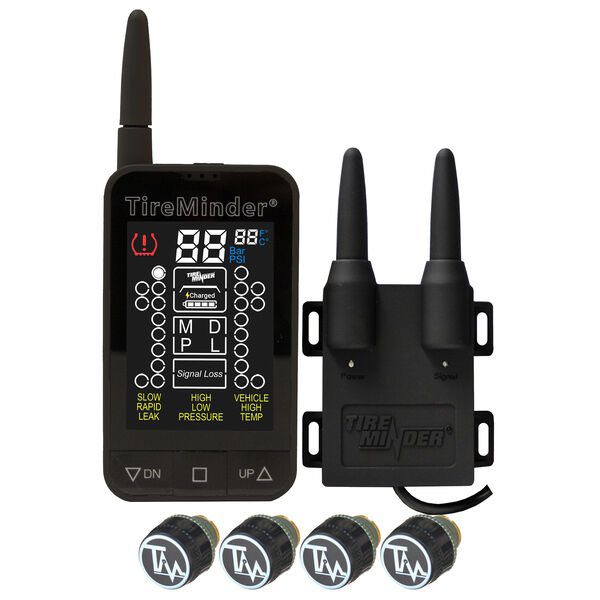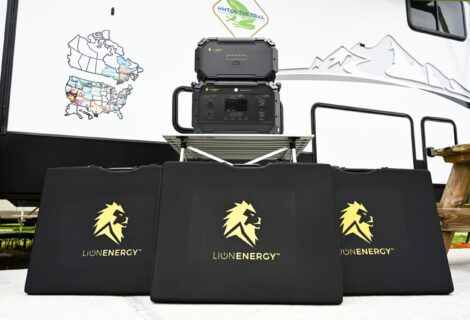Best TPMS: Tireminder 88C 3,187 Mile Review
UPDATED 21 AUG 20: Updated after TireMinder improved monitor brightness.
Is a Tire Pressure Monitoring System (TPMS) worth the investment? When we first started full-time RV living in May 2019 we didn’t think so. A TPMS was one of those niceties that maybe we’d get down the road. If we checked the pressure before we got on the road every time we’d be good. Right?! Wrong! A near-disaster changed our mind on a TPMS and luckily TireMinder contacted us about their TM-88C product and asked us to do a review…so we did a 3,187 mile one! Is it the best TPMS?
Do tire blowouts scare you? Well, fear no more. Tireminder Tire Pressure Monitoring System is your answer to stress-free and safe driving! Check it out!
WHAT IS A TIRE PRESSURE MONITORING SYSTEM?
Well, it’s just that, a system that monitors tire pressure and provides information to the user. A basic system includes a sensor and transmitter that is attached to the tire (some are attached to the wheel, others attach to the valve stems). Generally, these sensors and transmitters will read the tire pressure every 5-10 seconds and then send that information to a monitor. The monitor is placed near the driver, receives the signal from the transmitter, and provides near-real-time data on the status of the tires. Sounds cool right? But again, do you need one?
NEAR DISASTER
In February we were traveling from Yosemite National Park to Travis Air Force Base (AFB) in Northern California. The first 15-20 miles of the trip is down very steep, windy roads that hug the side of the mountains. Driving down this pulling our 31-ft travel trailer (“Casper”) was a bit stressful for all of us. The rest of the 130-mile trip was on great roads and 65 mph. When we arrived at our RV Park at Travis AFB I noticed that one of the tires looked oddly like a pizza cutter. Tall, thin, and definitely out of place on a travel trailer.

I checked all of the tires and fortunately just one of them was showing signs of near explosion. The tire pressure on it had increased from the 80 psi it was at when we left Yosemite to 100 psi, and this was after we’d been stopped for hours and the tires had time to cool down. The underbelly of the kitchen slideout had also been rubbed down to the plywood and looked as though it had been burned. Oh, did I mention that this is the kitchen slideout, and our propane lines run mere inches from where this tire was ever-so-gently creating friction (which causes heat) in its attempt to become the tallest tire it could be?

This tire looks a little too tall. 
This tire rubbed me the wrong way!
Anyways, the tire held on and what could have been a disaster became a stark reminder that you can’t take tire safety too lightly. Whether you’re full-timers, seasonal travelers, or weekend warriors, you and your family are riding in the vehicle (in the case of an RV) or in the vehicle towing the travel trailer. You need to know what’s going on with your tires! Now that we fully understood how serious it could be we decided that we’d be adding a TPMS when we dropped Casper off for maintenance in March. And then we were contacted by TireMinder.
TIREMINDER TM-88C
About a week after our incident we received an email from Minder, which is a division of Valterra Products, LLC, and the maker of TireMinder Tire Pressure Monitoring Systems. They had seen our Instagram post and asked if we’d like to do a review on one of their TPMS products. We’d actually been looking at their products because so many people in the RV community swear by them and they get great reviews. We agreed to do a review with the understanding that good or bad, we would provide an honest review. They said that’s what they wanted and then they shipped us the TM-88C-4 (four being the number of transmitters). DISCLAIMER: We did NOT pay for this product.
Unfortunately, the review was put on hold while we socially distanced for 3 months. We’d left Casper in Portland Oregon for maintenance and warranty work and flown home to Maine to get some things done…and then the virus hit and we were stuck in Maine for 3 months. Unable to wait any longer to have our home, I flew out to Oregon to pick up our truck and trailer and drive back to Maine. A 3,187-mile trip seemed like the perfect opportunity to install, use, and review the TireMinder TM-88C.
UNBOXING
The TM-88C-4 has a small footprint so the box is small as well. What’s inside will provide you with everything you need to install and use the product without needing to find additional tools or items to set it up.
– 1 Rechargeable Monitor
– 4 Brass transmitters
– 1 Rhino Hard-Wired Signal Booster with Alligator Clips
– 8 CR1632 Batteries
– 1 Mounting Bracket
– 1 Micro USB and DC Charger
– 4 Locking Nuts
– 1 Wrench with Valve Core Tool
– 4 Additional O-Rings
– 1 TireMinder Pouch
– TireMinder Manual
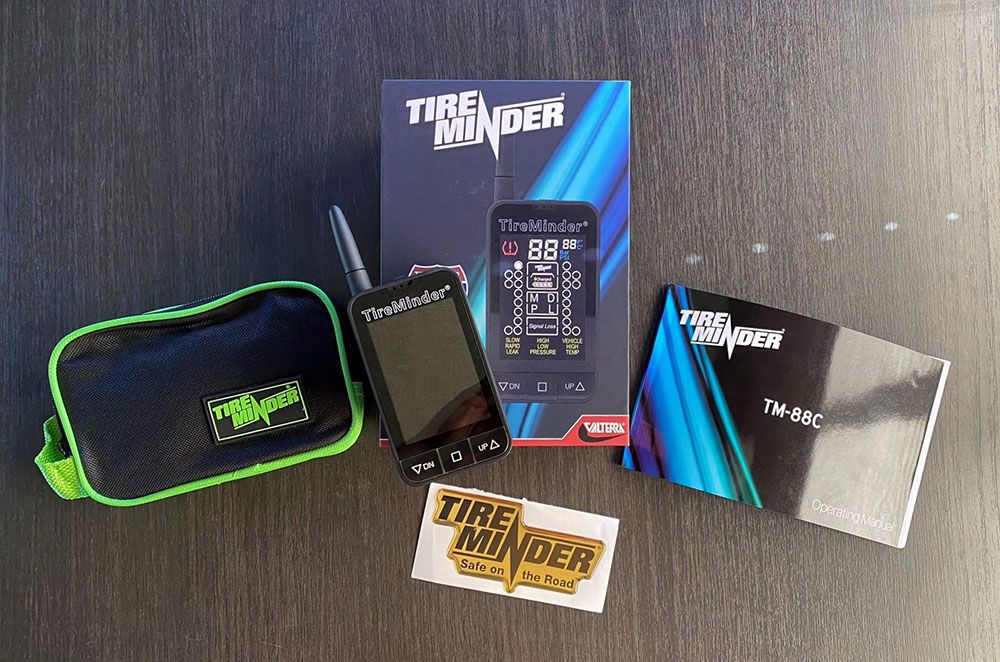
HOW DOES IT WORK?
The TM-88C is capable of working on up to 22 tires and 9 vehicles. The sensors are installed on the valve stems and check the status of tire pressure and heat every 6-seconds. If there are no issues, it sends a signal to the monitor with updated information every 4-minutes. If there is an issue, the transmitters will send a signal to the monitor immediately.
The monitor is easy to use and allows for viewing of all 22 tire positions. You can scroll through each position with a simple push of the up or down arrows and get the pressure and temperature of the selected tire. The monitor also has visible and audible alarms (which I found out are pretty loud) so you’re alerted to any issues. The system is set to alarm for any of the following:
– Blowout
– High-temperature (167 degrees)
– Low & High Pressure (15% below or 20% above baseline)
– Fast & Slow Leaks (3 psi or more in 2 minutes or less or 6 psi or more in
10 minutes or less)
INSTALLATION
Overall, the installation of the TM-88C is simple, the only part of the process that slows it down is the instructions. (More on this in the Pros and Cons in the final review. ) There are 5 steps to installation and it can be completed in about 10-15 minutes.
STEP 1: TURN ON MONITOR
The monitor comes partially charged so you’ll have plenty of power to
complete the initial set up. Simply press and hold the power button
until you hear the beep.
STEP 2: INSTALL BATTERIES IN TRANSMITTERS
The instructions show installing the signal booster next but they were
somewhat confusing so I chose to do this step next. TireMinder sends
you with initial and replacement batteries for each transmitter which I
think is awesome. To install the batteries just unscrew the cap of a
transmitter, slide the battery in, and screw the cap back on.
STEP 3: INSTALL THE SIGNAL BOOSTER
The TM-88C Signal Booster has alligator clips on the positive and
negative leads and all you have to do is attach them (positive first) to
your travel trailer or RV battery. The booster itself is supposedly
weatherproof but TireMinder recommends you install the booster in
the battery box which will protect it.
STEP 4: ATTACH TRANSMITTERS AND LEARN THEM
TO THE MONITOR
This process is done one tire at a time. Press and hold the up and down
arrow buttons at the same time for 5 seconds and you will see an “L” on
the screen. Scroll to the position you want by pressing the up or down
arrow, and then attach a transmitter to the valve stem. The monitor
will immediately beep and indicate that it’s learned the transmitter.
Scroll to the next position and repeat until you have all transmitters in
place.
STEP 5: SET BASELINE PRESSURE
The baseline pressure on the TM-88C comes factory set at 116 psi so
you’ll have to set it to your tire manufacturers recommended pressure.
With the monitor in “M” mode press use the up or down arrows to
scroll to the desired transmitter location and then hold the center
button for 5 seconds and you will see a “P” on the screen. Press the up
or down arrow to change the pressure to the required psi, then press
the center button. Rinse, wash, repeat until you’re done with all
transmitters.
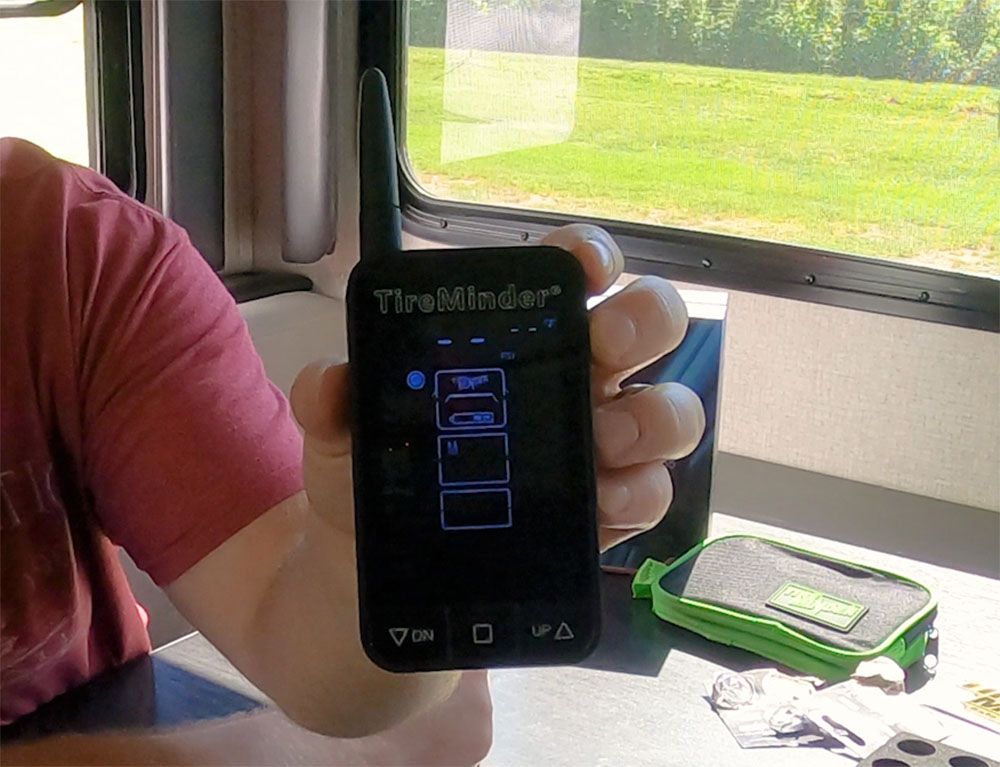
Step 1: Turn on Monitor 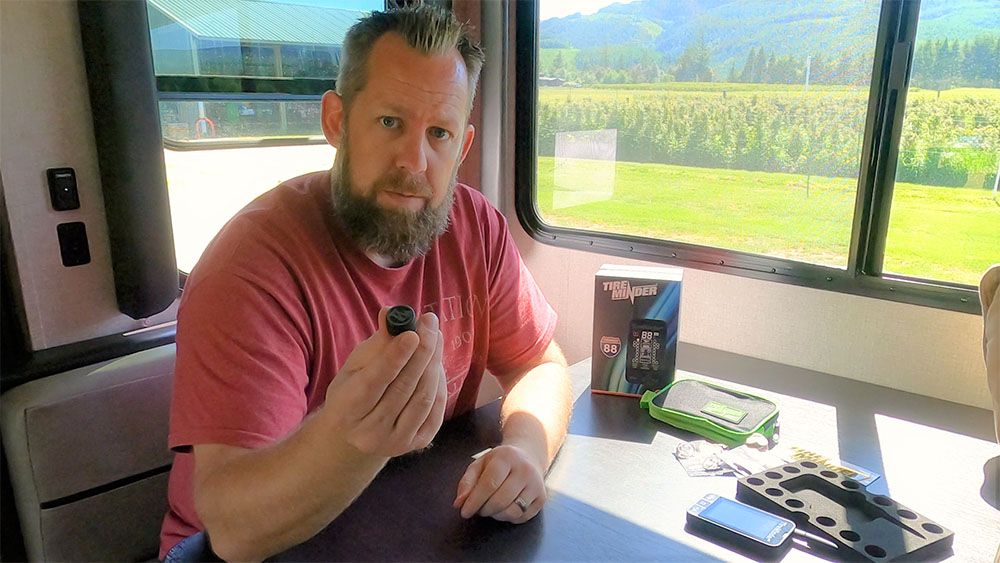
Step 2: Install Batteries in Transmitters 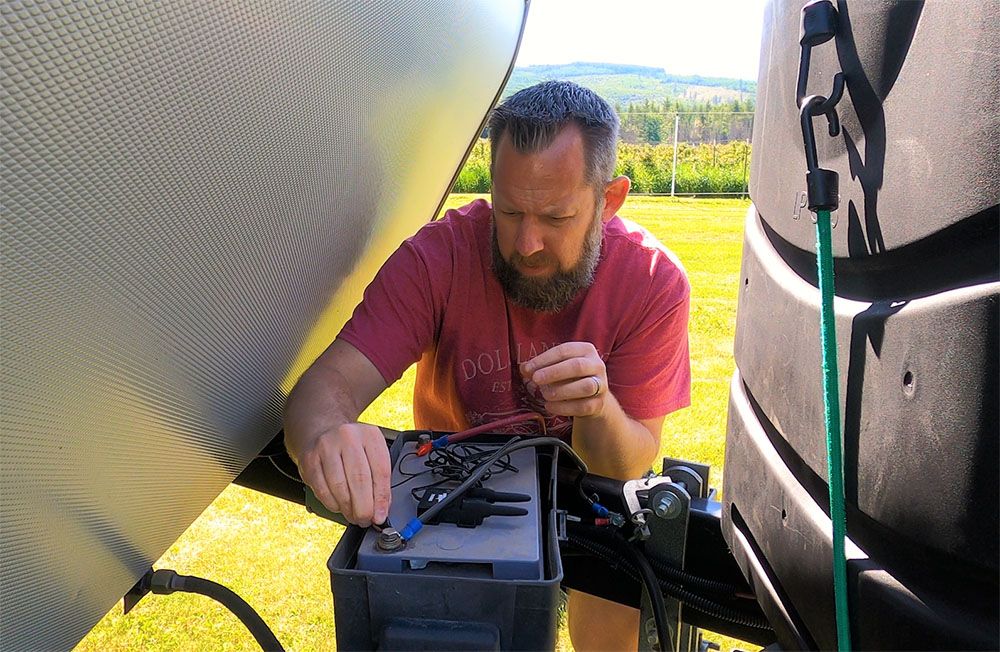
Step 3: Connect Signal Booster to Battery 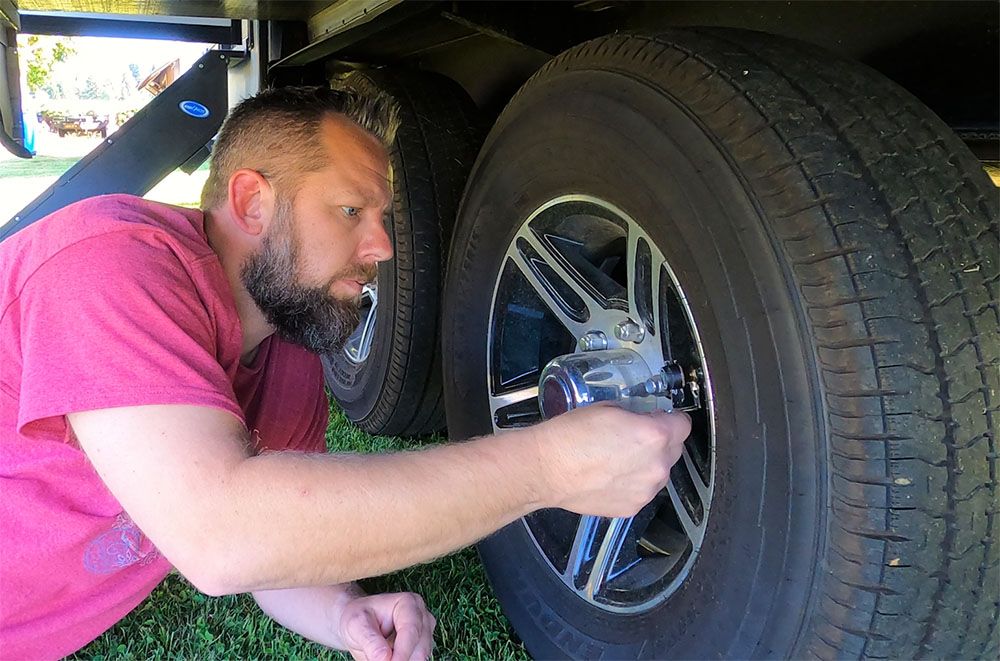
Step 4: Attach Transmitters… 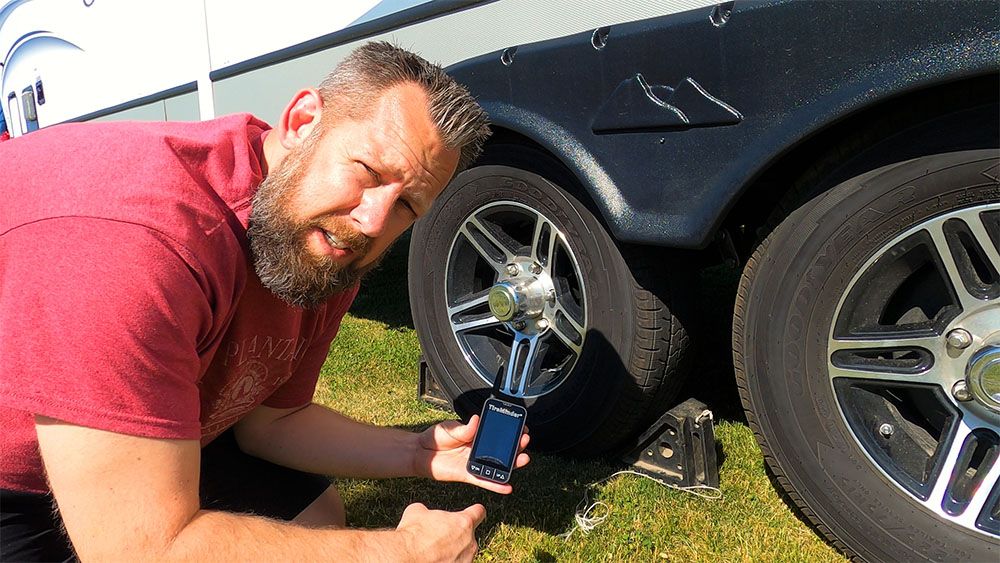
Step 4: …and Learn to Monitor 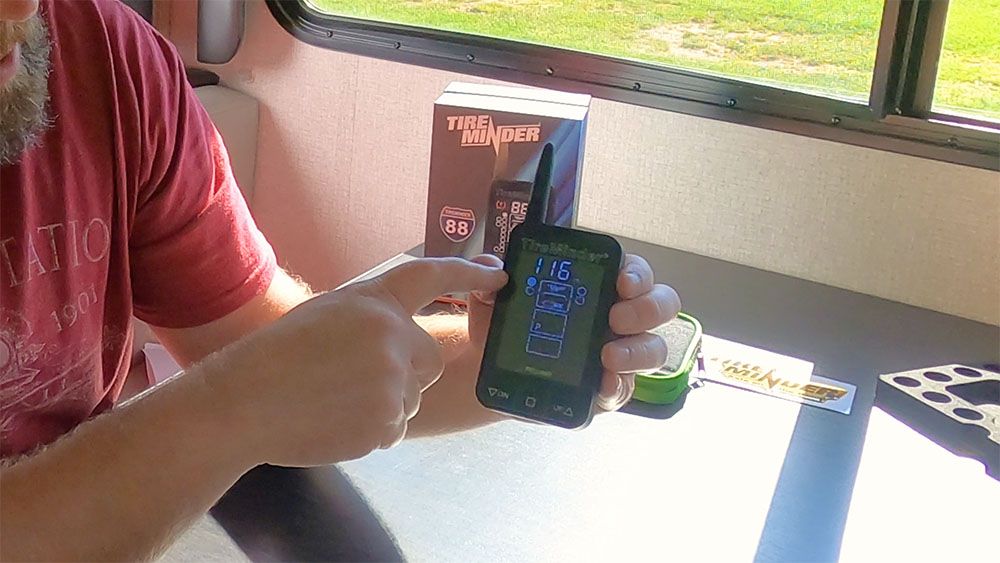
Step 5: Set Baseline Tire Pressure
USE
Using the TM-88C is as simple as turning it on, giving it 4-minutes to update information from the transmitters, and hitting the trail. You’re able to scroll through each tire by pressing the up or down arrow and the PSI and temperature are provided at the top of the display.
3,187 MILES WITH THE TM-88C
I installed the TM-88C outside of Portland Oregon and used it for 14 straight days as I made my way back to our home in Maine. A trip of 3,187 miles in temperatures ranging from 42 to 96 degrees, and altitudes from 400 feet to over 7,000. Every morning I would turn the monitor on, let it sit for 4 minutes to update the psi and temperature, and then head out. Using the TM-88C saved me from having to manually check each tire before hitting the road (yes, it’s something I’ve always done and you should too…unless you have a TPMS to do it for you).
Getting in the truck every day and knowing the status of my tires was a stress relief, and seeing the data in near real-time as I drove was very reassuring. Especially on some of the roads that were riddled with unavoidable potholes, and at times when other drivers decided it’s best to cut off a truck and trailer stretching 60 ft and then cause them to slam on their brakes because you realized you wanted to then go much slower for no apparent reason.
The TM-88C worked perfectly for me. The only time I had an issue was 1,700 miles into my journey when I was outside of Des Moines. As I cruised down I-80 listening to classic rock at a rather high decibel level I heard a much louder alarm go off, glanced at the TM-88C display, and saw a red exclamation point and that one of my tires was at 18 psi.
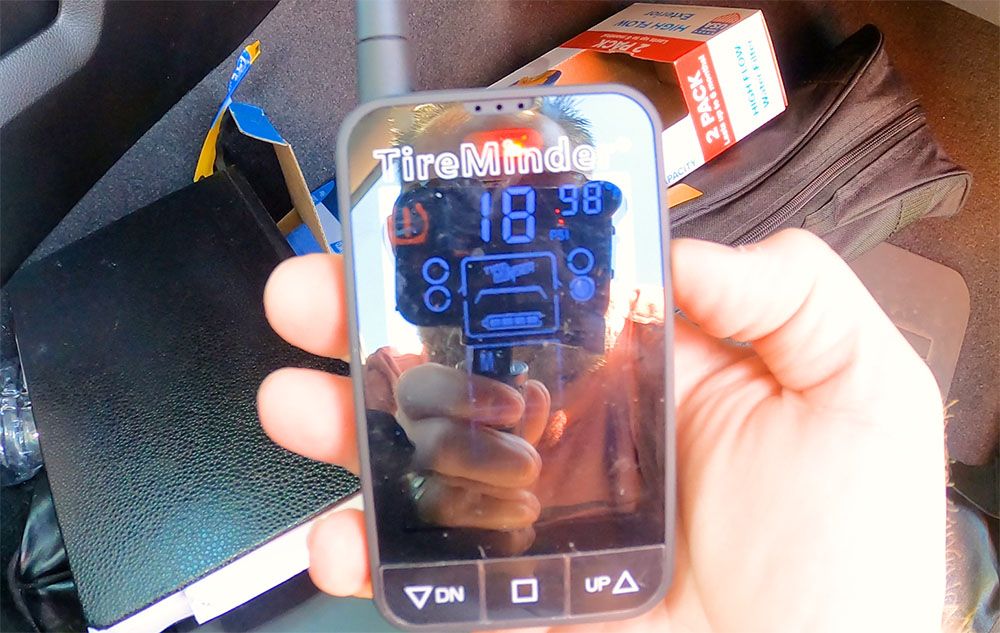
When I pulled over the tire looked completely fine. As I removed the transmitter I noticed that the transmitter was loose. I checked the pressure using my digital gauge and it showed 89 psi. When I put the TM-88C transmitter back on it instantly showed 89 psi as well. Somehow the transmitter had come slightly loose (I’ll admit, it could have been operator error from when I installed it) and over time it continued to loosen up until it no longer was able to accurately read the psi and temperature.
Lucky for me it was a false alarm and I didn’t have to test the capability of the system with a true blowout. It was great to see how quickly the
TM-88C reacted to a loss in pressure though and it was a relief to know that the alarm can be heard over excessively loud music. Anyway, I reattached the transmitter properly and put another 1,400 plus miles on it without incident.
PROS & CONS
PROS
- EASE OF SETUP: Regardless of the poor instructions you can set this thing up in under 15 minutes.
- EASE OF USE: Getting real-time data at the press of a button and with an extremely small footprint is awesome. Anyone could use this product!
- ACCURACY: Along the way, I checked the psi using a digital reader and the old pencil-style gauge at various times of day and temperatures to compare them with the TM-88C, and every time they were spot on.
CONS:
- MONITOR BRIGHTNESS: The display is very hard to see in sunlight and even in the car it’s difficult to see unless you have it angled properly. I spoke with the team at Minder and they are aware of the issue and the new version of the monitor is 6 times brighter. The best part, if you have the older model you can contact them and they’ll work with you to replace it with the newer model.
UPDATE ON THE MONITOR: IT’S 6 TIMES BRIGHTER
TireMinder has enhanced the TM-88C screen brightness on the monitor and now claims it is 6 times brighter. They’re using the same monitor but updated the electronics inside to get the brighter digital readout. The updated units will be available in September 2020 but they sent me one to test out.
I connected the old and new monitors to our high-tech comparison tool and placed them in various positions and angles inside our truck. TireMinder’s claim that it’s now 6-times brighter is pretty accurate in my opinion. I was able to read it regardless of what angle I placed it at. The improvement is impressive and TireMinder is making the updated monitors available to anyone that has the older version.
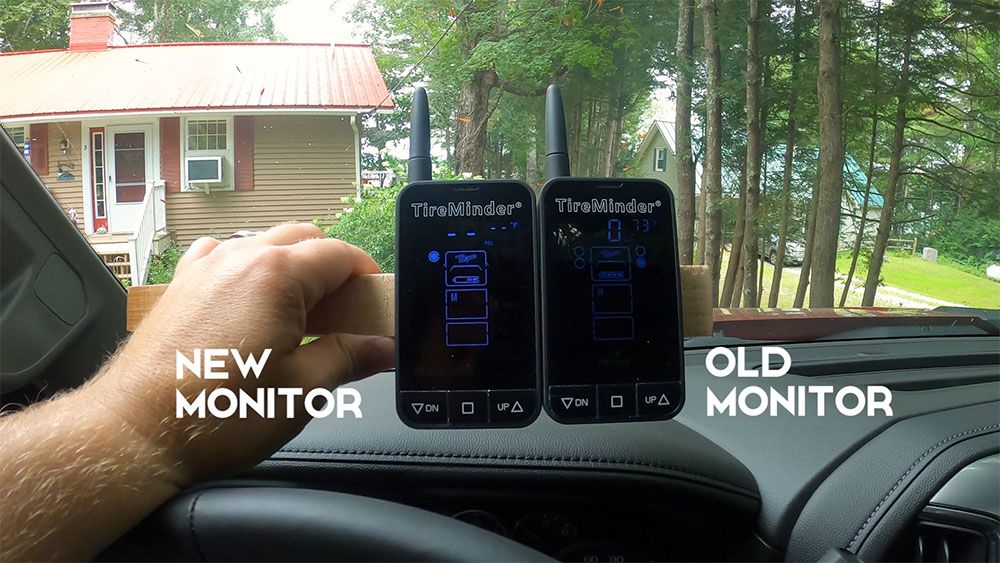
Old vs New. It’s 6 times brighter!! 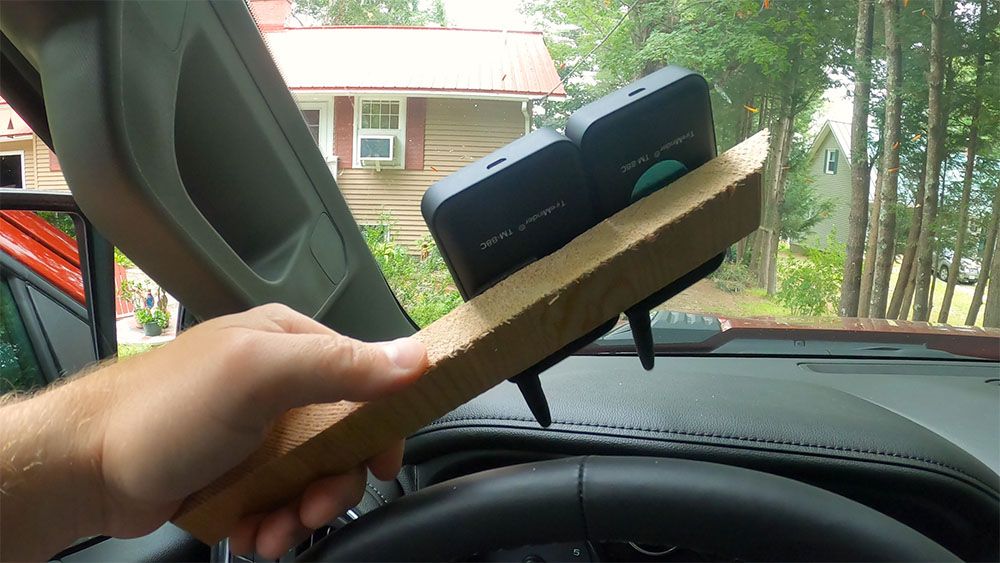
Our High-Tech Comparison Tool 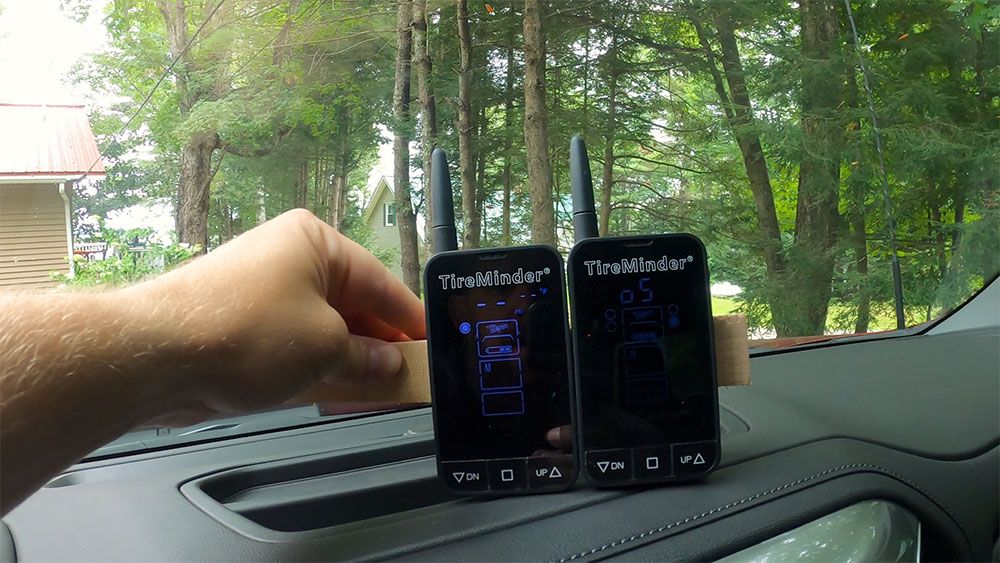
Every Angle is Better With the Updated Monitor 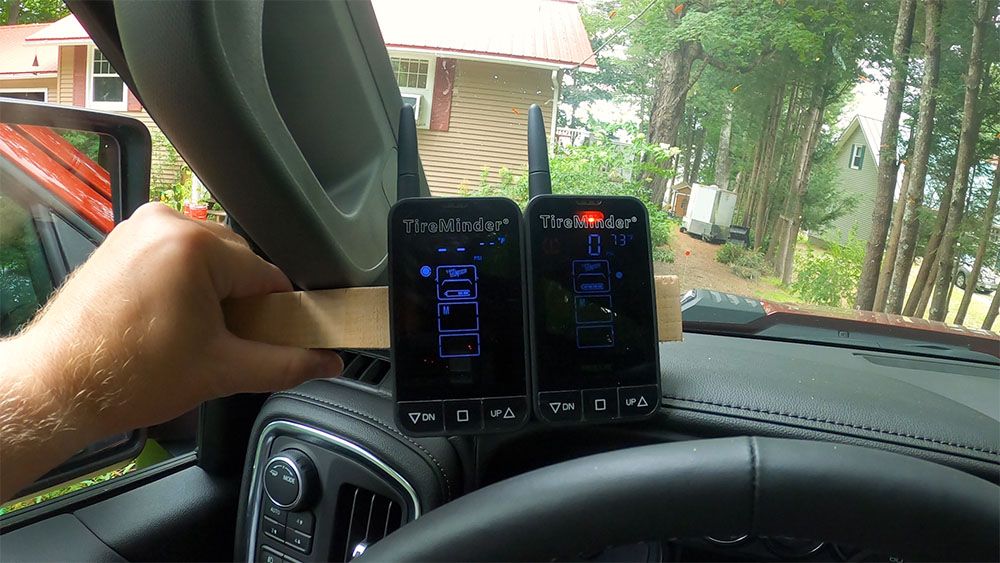
The updated monitor will show up better wherever you place it. 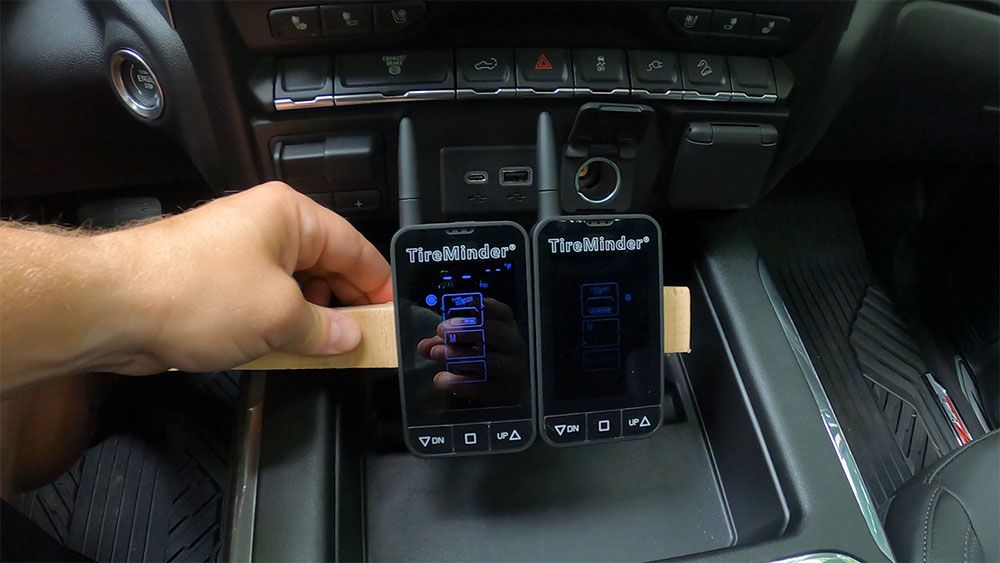
It really is 6 times brighter!
If you purchase the TM-88C after September 2020 you should get the new monitor. Don’t worry though, if you have the old one TireMinder will swap it out FOR FREE. Just contact them at either at [email protected] or at (772) 463-6522 and they’ll work with you to get an updated monitor sent out. You just have to send back the old monitor after you receive the new one.
The fact that TireMinder can quickly fix an issue and is willing to swap out products for free speaks volumes about their customer service and their willingness to back their products. What was originally a con for the product has turned in to a huge pro in my opinion.
You can check out the update video here.
2. THE INSTRUCTIONS: I really didn’t like the instructions. Instead of going step-by-step and providing guidance on each step, they ask you to jump to different pages to find out how to do it. Then you have to flip back to the previous page to find the next step, which tells you to go to another page on how to do it.
I brought this up with the team at Minder as well and they are going to look into it. Regardless, the installation is pretty simple and can be done by anyone. (Bottom line, if I can do it so can you.)
FINAL REVIEW
I put 3,187 miles on my trailer in just over two weeks and had the TM-88C on the entire time. Its ease of use, near real-time information, and the ability to alert me of any issue immediately is awesome. Knowing that the product has the tested ability to alert me to a potentially life-threatening situation makes it a product I won’t ever go without again.
TireMinder has a huge lineup of tire pressure monitoring systems to meet just about any need so if the TM-88C isn’t right for you I’m betting they have one to fit your needs.
Would I recommend it to you? Yes, without reservation! If you’re interested in the TM-88C you can check it out here*.
The bottom line for me is that this is a fantastic product. It may look a little pricey, but for what it does, how well it does it, and what’s at stake, it’s well worth every penny.
*We are Camping World affiliates. Purchasing with our link will not cost you a penny more, but we receive a small commission to help us continue to provide great content and reviews.


